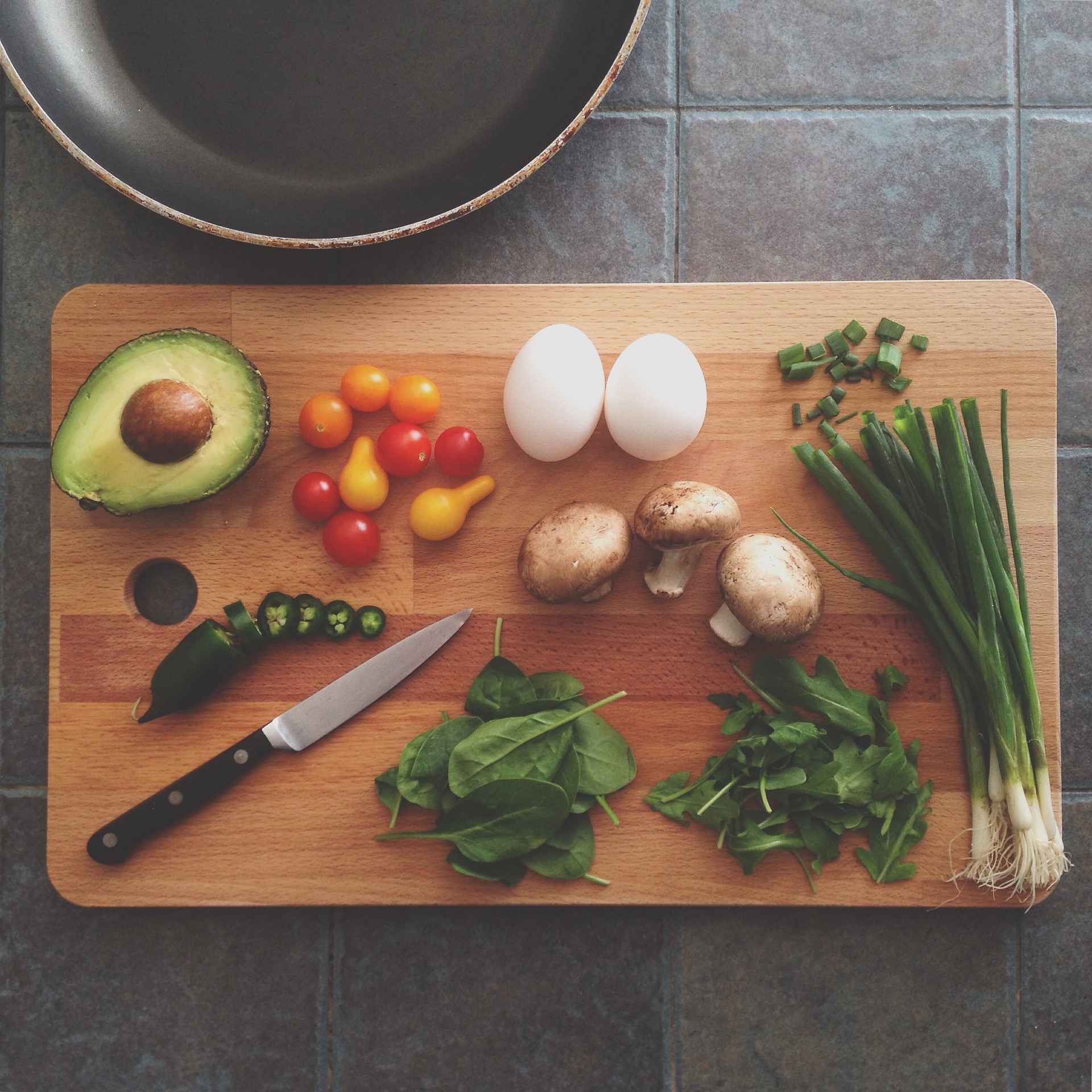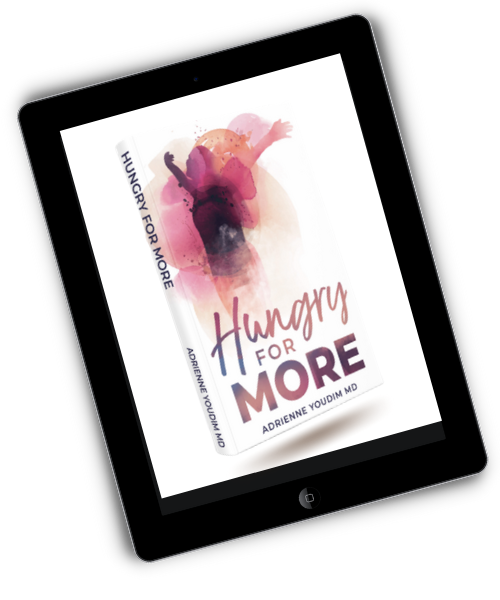Common things are common as they say, and the ways we handle our hunger is also common. I often talk a lot about mindset, because mindset is everything. But today, we’re going to get practical and talk about some of the common pitfalls in trying to change our diet.
Mindset is Everything: What’s Good for Our Body is also Good for Our Minds
For those of you who read my blog regularly regularly, you know that we talk a lot about mindset, because mindset is everything. I can provide you with all of the tips and tricks, dietary strategies, pills, supplements, what have you, and nothing will work if your head is not in the right place.
Today, we’re going to get practical and talk about some of the common pitfalls that we all come across when we’re trying to change our diet. And while we don’t like to focus on weight loss, let’s face it – weight loss is important – especially now, because many of us have gained oodles of weight during the pandemic despite ourselves. I, myself, gained an unexpected amount of weight despite exercising every single day. My exercise and workout practice is a spiritual practice. If I don’t do it, I’ll kill my children. So, I do it, regardless. But hey, life happens. Once I noticed that I was falling in a rut, I had to pull myself up and dust myself off and do all the things that I share with my patients every day and I’m going to share with you.
So, let’s talk about some pitfalls and how we can get around those to engage in this effort of maintaining a healthy weight. And let’s remember too, by the way, that what’s good for our body is also good for our minds. The practices, the way we nourish ourselves in preserving a healthy weight – so, the things that we can do to help maintain a healthy weight – are the very same things that are important to keep us healthy cognitively, to help keep our minds healthy, and help promote a good mood, reduce the risk of depression and anxiety. They are the very same dietary strategies that help with productivity, and this is all evidence-based.
There’s science to support that eating your five servings of fruits and vegetables a day not only is important for a healthy weight but is chock full of vitamins, minerals, nutrients, and antioxidants which helps support cardiometabolic health, your immunity – so much talk about our adaptive and our innate immunity these days – and yes, the poly phenols that are found in fruits and vegetables, those antioxidants do help support both innate and adaptive immunity. And those fruits and veggies, also, are shown to help support mood. In fact, in one study when young adults were given a Mediterranean style diet which consisted of a significant amount of fruits and vegetables for only three weeks, they reported reduced symptoms of depression. So again, what’s good for your body is good for your mind, is good for your mood. And finally, study shows that five servings of fruits and vegetables help improve productivity in the workplace.
So while sometimes, we diss the weight loss effort – and I know there’s this kind of counterculture and backlash against weight loss; we can talk about that at another time – the way in which we maintain a healthy weight is the very same way that we maintain a healthy mindset, healthy mind, cognition, mood, and productivity.
Pitfall #1: What Happens During One’s Witching Hour? How to Win Against It?
So with that, let’s proceed to pitfall #1 which I like to call “the witching hour”.
You know that is that time of day usually between 3 and 6 PM where we start to get the munchies and we can completely unravel an entire day of healthy eating.
Typical story: Wake up, eat some eggs for breakfast, make a perfect salad for lunch then 3 PM rolls around. You start itching for something, head over into the pantry, one thing leads to another leads to half an apple with peanut butter, some strawberries, a string cheese, the crust on your child’s grilled cheese sandwich….
Before you know it, you have consumed thousands of calories.
Don’t believe me? I’ll give you an example.
¼ cup of mixed nuts is 260 calories. Have you ever measured out ¼ cup to a 1/3 cup? It depends on the kinds of nuts so it can be less than that, but have you ever measured out a ¼ cup of nuts? It’s like peanuts, and by peanuts I mean, like nothing. And so, imagine. One, two, three handfuls of nuts, you could easily be in 600 calories, but then, that’s not enough. You’re looking for something sweet. So then, maybe you grab a few chocolate chips and then grab a few more, grab a few more, there goes another couple 100 calories, but then you realize, “Holy cow. I’m really hungry and these handful of nuts and handful of little mini chips did nothing for my hunger,” and then head into the fridge to grab something more substantial. So, that witching hour can really undermine you.
That witching hour can really get the best of you.
So, what’s the solution?
- ⏰ Implement a snack at a proper time. Because the truth is, that stretch between lunch and dinner is a really long stretch of time, and while I’m not a proponent of six meals a day or frequent snacking – that’s just promoting grazing behavior – I do believe that that timeframe between lunch and dinner needs to be addressed or it will get the best of us. So, know your hunger. Know when it strikes and plan for it.
- 🥚Implement a proper snack. The goal of a snack is to satiate you enough to get you to the next meal and protein is the macronutrient that does that best. Some options include hard boiled eggs, greek yogurt, cottage cheese (I know cottage cheese is like a Richard Simmons’ sort of thing but actually it is a great snack. Try it with ripe peaches, it’s just like peaches and cream!) I am also a huge fan of protein shakes and protein bars but be careful about the kinds of bars that you consume, most are just a glorified candy bar.)
- 🧘♀️Check in with yourself. Maybe you are not really hungry for food? Maybe you are tired, bored, flustered, zoom-fatigued. Maybe you need sleep, fresh air, conversation with a friend? Check in with yourself and give yourself what you are truly hungry for. Perhaps that thing is not food but something else.
Pitfall #2: Why Shouldn’t You Skip Meals? What Happens Each Time You Do?
I kind of alluded to this in the first pitfall, but skipping meals is actually a huge dietary pitfall. And I’ll tell you this. Well, I wouldn’t say the majority of my patients, but a good number of my patients who come in to see me and report that they’ve gained weight, one of the behaviors that we identify is that they started skipping meals. Often, what happens is people start working and because of their work, they dash out early without consuming breakfast, they put lunch on a backburner because they’re just working through their lunch, and then the only meal that they consume is dinner. Now, if that works, if skipping meals works, you would think that, “Well, I’m only eating one meal a day. And so, isn’t that ‘saving calories’?” The answer is absolutely no. Because in that one meal, you can totally eat past your hunger and accumulate way more calories than you otherwise would if you had eaten throughout the day.
What happens when you skip meals? A couple of things.
- 🍽 Don’t skip meals. Our hunger is regulated by hunger hormones. I’ve described the physiology of this in other blogs. So, our stomach or intestine, our fat cells, and our pancreas all release hormones that notify our brain of our hunger, and in essence, turn on or turn off hunger. Well, the studies show that when you fast or skip meals, you actually dysregulate your hunger hormones so your they get jacked up to the point that it’s hard to shut them off.
- 🕰 What about intermittent fasting? There is data for intermittent fasting and the data is much stronger for certain health benefits, primarily, in rats. So when they fast rats, they’ve shown that they have some metabolic benefits in terms of longevity, etc., but when it comes to weight loss, the data is all over the map. Actually, long term data does not show that intermittent fasting is a viable strategy. Now, I never argue with a patient or a person’s experience. You’ve tried intermittent fasting, it works for you, it’s your jam, knock yourself out, and do your thing. It’s not one size fit all. Different strokes for different folks. So, you do that, but I’ll tell you that my anecdotal experience and the data in the medical literature does not support intermittent fasting.
Pitfall #3: Why Is It Important For You To Be Wary Of Fake Healthy Food And Be Mindful Of Portion Sizes Of Healthy Foods?
This is a serious pet peeve of mine – fake healthy food, and by that, I mean, the foods that have been put out there under disguise of health.
- 🍴Acai bowls. The worst offenders are acai bowls. Actually, my younger cousin was here visiting from New York and she was talking to my kids about how she felt so healthy because she just had a acai bowls. Every hair on my body stood on the end and I wanted to scream, but I decided, you know what? I’m not going to do the thing that I do. My kids hate it – always talking about and fact checking health food stuff. But it’s true.
- 🍽 Sable. So back in the day, Jamba Juice – and not to throw any particular group or company under the bus – was selling a sable. I don’t know if they still do it. And their sable had 92 grams of sugar. Seriously, 92 grams of sugar. A sable tends to be high in calories, high in fat because they usually also include granola, and by the way, granola is another fake healthy food. There is nothing healthy about granola. Yes, there are some oats deep in that granola cluster, but then, it is covered in sugar and honey; it is not healthy. So, stay clear and be wary of fake healthy food.
- 🥤Smoothie. Smoothies are another one. Just eat the whole fruit. I am not a fan of fruit smoothies, and I am definitely not a fan of fruit juices, because all you’re getting is the sugar. You’re taking out the pulp which is filled with fiber. You’re taking out all the nutrients, and you’re just getting sugar. So if you’re going to drink the juice, just eat the fruit. Now, my only counter to that is that I do like a fruit smoothie if you include protein, and the best kind of protein for weight loss is whey protein. If you have intolerances to dairy or are vegan, then you can go with plant based protein powders, but I actually think that the best protein is whey protein. If you put in a high quality whey protein powder into your smoothie and you’re getting 20 grams of protein, great; that’s a great snack. That’s a great breakfast because 20 grams is what it takes to really help curb your hunger.
I‘m going to add to that and say be wary of not fake healthy food too. And by that, I want to bring up the example of nuts again, because nuts are healthy. They are a good fat. They’re a great source of poly and monounsaturated fats. We know that a diet that includes poly and monounsaturated fats is heart healthy, it is helpful for cognition and reducing Alzheimer’s disease, benefits to disease prevention like diabetes. So, good fats are good, but they are fats. So remember, a ¼ cup of mixed nuts can be up to 260 calories. So if you are swapping your bag of chips for a bag of nuts and eating multiple portions, then that’s not going to serve you either.
So, be wary of fake healthy food and also be mindful of the healthy food. Portion size matters.
Pitfall #4: Why Making Sure That You Are Not Under Consuming Protein is a Must?
And then finally, the last pitfall which is kind of the first pitfall that I see when I ask patients. When I see patients in the office, I do a really thorough intake, an exam, and the historical intake also includes a dietary recall. And what I find more often than not is that my patients are way, way under consuming protein.
If you look up the RDA or the Recommended Dietary Allowance by the US government, it’s kind of – for lack of a better word – a bullshit amount of protein that people should consume. It says something like 40 to 50 grams of protein. But when it comes to weight loss, that is way, way under what it should be, and there’s several reasons for that.
- 🍗Protein is your most satiating or most filling macronutrient. If you’re going to compare protein, carbohydrates, and fats, protein is going to be the nutrient that is most filling and it is the nutrient that’s going to give you the most staying power. Fun fact: it’s interesting, actually, that a lot of my patients who have tried to go vegan or vegetarian in attempts to lose weight actually find themselves struggling and in many instances, gaining weight. And the reason is because protein, again, is satiating. And when you take animal protein out of the diet, it becomes really hard to satiate. Now, it doesn’t mean that you can’t consume plant-based proteins. So, I always tell my patients and I tell my daughter who’s kind of pescatarian/vegetarian/sometimes vegan that if she wants to be vegan, fine, but be a responsible vegan which means really incorporate beans, grains, legumes, these other sources of protein, not just simple carbohydrates which are mostly devoid of nutrients.
- 🥩 How much is enough? The studies show again that 15 to 20 grams of protein per meal is helpful in suppressing hunger hormones, suppressing food intake and snacking all day long. So, 15 to 20 grams. What does that mean? An egg is six grams, for example. Egg whites are four grams. Three ounces of chicken is about 27 grams. Half cup of garbanzo beans is about 19 grams. So that just gives you a sense. Cheese, terrible source of protein. I know people talk about it, but usually two to six grams, and it’s very high calorie because it’s a fat. Peanut butter, also not a great source of protein. It’s pitched as one but only two grams of protein for every 100 calorie tablespoon.
- 🏃♀Preserve lean muscle mass. When you lose weight, when people lose weight, they can lose either fat mass – that’s what we want to lose – or we can actually lose muscle if we’re not careful and conscientious about how much protein we’re consuming, and if we’re not exercising – that’s the other piece – then, we can also lose muscle. And the studies show that in order to not lose muscle or to mitigate that because we may lose some, but to reduce the amount or to optimize the amount of fat loss, not muscle loss, we should be consuming about 1.5 times our lean body weight. That translates roughly into 80 to 100 grams of protein for most individuals per day, which is a lot of protein and may feel daunting, but try this. Try just doing a survey for a day. Keep a food log, not for the calories or for caloric purposes, but maintain a food log and just take a survey of how much protein you’re consuming per day, and then try and shoot for 10 to 20 grams more in one day and see what happens. I promise you that my patients will universally come back week two and say, “Wow, that extra amount of protein really helped.”
I hope that was helpful in offering you actionable bites today on how to maintain healthy weight. And let me know what you think. I can be found on Instagram. You can also shoot me an email to dr@dradrienneyoudim.com It’s a mouthful, but that is an email that comes directly to me. So if you want to shoot me an email and let me know how these four pitfalls have helped you, I would love to hear back from you. And if you’ve loved this episode, I would be so grateful if you’ll subscribe and share it with someone you love.
And finally, I would love for you to all try Dehl bar. So, remember Dehl bar. It is our high protein, low calorie bar. I actually created this for myself, two years ago for my patients because the question always was, what is the best bar out there for me? And honestly, you can go up and down that whole foods shelf multiple times and there’s nothing that I could recommend, because either they are way too high in calorie or high in sugar or the label isn’t clean or inadequate protein.


